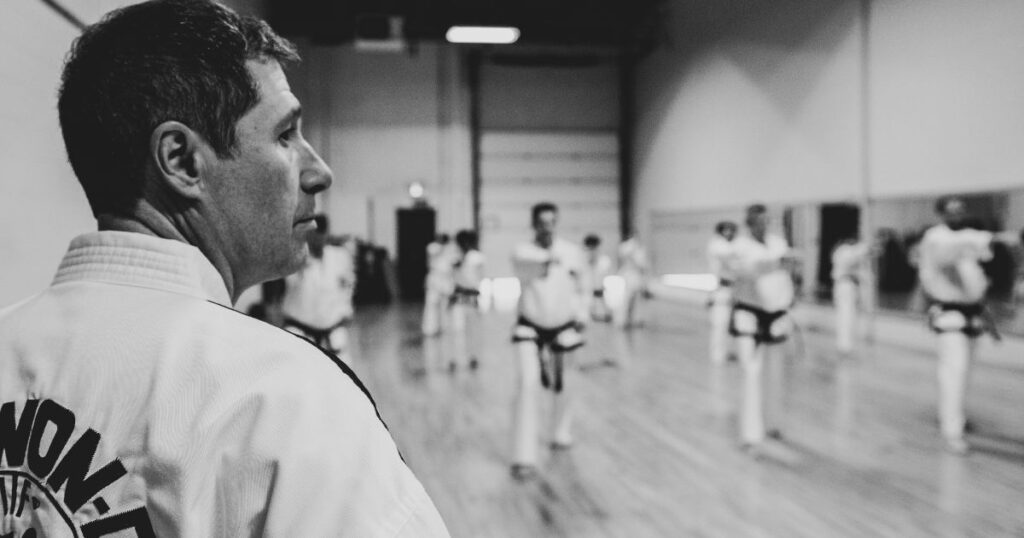The journey of choosing martial arts styles can be as diverse and complex as the art forms themselves. With hundreds of martial arts types from around the globe, each offering unique philosophies, techniques, and histories, deciding which path to take can seem overwhelming. Whether you’re new to the world of martial arts or looking to expand your knowledge, understanding the distinct styles is crucial. This guide introduces you to 20 martial arts styles you should know about, aiding your journey to learn martial arts and enrich your physical and mental prowess.
1. Karate (Japan)
A striking art using punching, kicking, knee strikes, and elbow strikes. Karate focuses on discipline, self-defense, and moral development.
2. Taekwondo (Korea)
Known for its emphasis on high kicks and rapid striking techniques, Taekwondo promotes physical fitness, discipline, and respect.
3. Judo (Japan)
A grappling-oriented martial art famous for its throws and submissions, Judo emphasizes efficiency and the principle of “maximum efficiency, minimum effort.”
4. Brazilian Jiu-Jitsu (Brazil)
Focuses on ground fighting and submission holds, enabling a smaller person to defend against a larger adversary through leverage and technique.
5. Muay Thai (Thailand)
The “Art of Eight Limbs” incorporates punches, kicks, elbows, and knee strikes, making it a powerful stand-up combat sport.
6. Aikido (Japan)
Aikido practitioners use their opponents’ energy against them through throws and joint locks, focusing on harmony and non-resistance.
7. Wing Chun (China)
A form of Chinese Kung Fu, emphasizing close-range combat, quick punches, and tight defense to overcome opponents.
8. Kung Fu (China)
An umbrella term for Chinese martial arts, Kung Fu encompasses a variety of styles, each with its own techniques and traditions.
9. Krav Maga (Israel)
A self-defense system developed for the military, combining techniques from Boxing, Wrestling, Aikido, Judo, and Karate for real-world application.
10. Boxing (Global)
A combat sport focusing on punch combinations, footwork, and strategy, Boxing is known for its simplicity and effectiveness.
11. Kickboxing (Global)
Blends elements of Boxing with kicking techniques from Karate and Muay Thai, offering a dynamic striking and fitness regimen.
12. Sambo (Russia)
A martial art developed from Judo and local Russian fighting styles, Sambo is recognized for its grappling and ground control techniques.
13. Capoeira (Brazil)
A unique blend of martial arts, dance, and music, Capoeira is noted for its acrobatic movements and cultural richness.
14. Taichi (China)
Often practiced for its health benefits, Taichi is a gentle form of martial arts focusing on slow, fluid movements and deep breathing.
15. Jujutsu (Japan)
An ancient martial art that uses the opponent’s force against them through throws, locks, and defensive techniques.
16. Eskrima (Philippines)
Also known as Arnis or Kali, Eskrima is a weapons-based martial art focusing on sticks, knives, and various bladed weapons.
17. Hapkido (Korea)
Combines joint locks, kicks, and throws with traditional Korean martial arts philosophy, focusing on circular motion and non-resistance.
18. Kyudo (Japan)
The “way of the bow,” Kyudo is Japanese archery that emphasizes technique, meditation, and the spiritual aspects of martial arts.
19. Silat (Southeast Asia)
A class of indigenous martial arts from the Malay Archipelago, Silat is known for its unique blend of strikes, joint manipulation, and weaponry.
20. Wrestling (Global)
One of the oldest forms of combat, Wrestling focuses on takedowns, control, and pinning opponents, with styles varying by culture.
Choosing the right martial arts style involves understanding your personal goals, interests, and physical capabilities. Whether you’re drawn to the striking techniques of Karate and Muay Thai, the grappling finesse of Brazilian Jiu-Jitsu and Judo, or the cultural richness of Capoeira and Taichi, there’s a martial art for everyone. By exploring these diverse martial arts types, you can embark on a fulfilling journey to learn martial arts, enriching your life with discipline, strength, and spiritual growth. Remember, the best way to discover the right martial arts style for you is to try a few classes, talk to instructors, and connect with practitioners to find your path.
